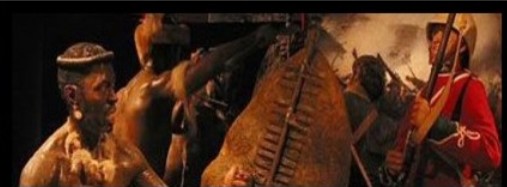| Latest topics | » The Pictorial World - March 15th 1879 Yesterday at 1:13 pm by ben2000 » The lost diary of Pvt James Owen Thu Jul 25, 2024 12:03 pm by miklew » Last of the 24th at Isandhlwana Wed Jul 24, 2024 6:16 pm by John Young » What was the uniform of field marshals/generals in the zulu war? Mon Jul 22, 2024 6:53 am by John Young » Henderson and the NNH at Rorke's Drift  Sat Jul 20, 2024 12:17 pm by SRB1965 » Capt. D. Hayes 1/3rd Regt., NNC Thu Jul 18, 2024 11:11 am by Julian Whybra » The Wrecked Camp Wed Jul 17, 2024 4:33 pm by Julian Whybra » Private N/N John Robert Branch 90th Regiment and his discovered diary Mon Jul 15, 2024 8:53 pm by 1879graves » Private John Scott 24th Regiment a fugitive at large Sun Jul 14, 2024 12:06 pm by 1879graves » 90th foot sgt T. Collins 214 Sun Jul 14, 2024 10:57 am by johnman » Baron Von Steitencron Wed Jul 10, 2024 3:10 pm by Julian Whybra » Sgt Joseph Windridge, Defender of Rorke's Drift - Memorial Tue Jul 09, 2024 3:15 am by 90th » Writing advice Sun Jul 07, 2024 4:04 pm by Julian Whybra » South Africa 1877-79, 1 clasp, 1877-8-9 (4389 Fr. Sergt. S. Smith. O/2. Bde. R.A.) Sun Jul 07, 2024 9:30 am by rai » The trashing of the Zulu monument to the brave warriors at Isandlawana March 12, 2024 has been blamed on scrap metal scavengers. Thu Jul 04, 2024 7:41 pm by ADMIN» The Goodwill Zulu Festival: Celebrating the Welsh and KwaZulu Natal Shared Heritage. Thu Jul 04, 2024 7:27 pm by ADMIN» Any nominal role of G Coy 2/24th regiment  Thu Jul 04, 2024 11:18 am by Wayne » Bassage Diary Thu Jul 04, 2024 9:31 am by Julian Whybra » Prior to Sihayo's Kraal  Thu Jul 04, 2024 9:19 am by 90th » British Fort Locations Thu Jul 04, 2024 3:40 am by 90th » Sergeant 1064 Tom Hick / Hicks G Company 2/24th Regiment Wed Jul 03, 2024 11:05 am by Julian Whybra » A Hungarian soldier in the Zulu War (?) Fri Jun 28, 2024 2:31 pm by Mr M. Cooper » Private 25B/279 Henry Sears Bugler E Company 24th Reg. KIA Isandlwana Thu Jun 27, 2024 1:07 pm by gardner1879 » Hamilton Browne's birthday Fri Jun 21, 2024 9:22 am by Julian Whybra » Zulu "Corps" Thu Jun 20, 2024 6:01 pm by Hobbes » Army Pay Department Personnel Thu Jun 20, 2024 11:49 am by Julian Whybra » Ntshingwayo birth date Sun Jun 16, 2024 11:37 am by Hobbes » Zibhebhu and Cetshwayo's family Wed Jun 05, 2024 9:11 pm by Julian Whybra » Smith's Store/Hotel Wed Jun 05, 2024 6:06 pm by Julian Whybra » Corporal James Frowen Williams F Company.  Tue Jun 04, 2024 5:20 pm by Julian Whybra » Shaka iLembe Sat Jun 01, 2024 1:27 pm by Jon84 » Bugler 1415 Thomas Finn / Flin 90th Regiment  Sat May 25, 2024 11:28 am by johnman » Inspector-General Evelyn Richard Hugh Pollard Tue May 14, 2024 10:13 am by ADMIN» Alfred Fairlie Henderson photographs. Sat May 11, 2024 8:01 am by Julian Whybra » Fairlie's Native Police Thu May 02, 2024 9:12 pm by Hobbes |
| July 2024 | | Mon | Tue | Wed | Thu | Fri | Sat | Sun |
|---|
| 1 | 2 | 3 | 4 | 5 | 6 | 7 | | 8 | 9 | 10 | 11 | 12 | 13 | 14 | | 15 | 16 | 17 | 18 | 19 | 20 | 21 | | 22 | 23 | 24 | 25 | 26 | 27 | 28 | | 29 | 30 | 31 | | | | |  Calendar Calendar |
|
| Top posting users this month | |
| New topics | » The Pictorial World - March 15th 1879 Yesterday at 1:13 pm by ben2000 » The lost diary of Pvt James Owen Thu Jul 25, 2024 12:03 pm by miklew » Last of the 24th at Isandhlwana Wed Jul 24, 2024 5:53 pm by miklew » What was the uniform of field marshals/generals in the zulu war? Sun Jul 21, 2024 12:30 pm by darthvaix » Henderson and the NNH at Rorke's Drift  Fri Jul 19, 2024 1:29 pm by SRB1965 » Capt. D. Hayes 1/3rd Regt., NNC Wed Jul 17, 2024 10:52 pm by Julian Whybra » The Wrecked Camp Sun Jul 14, 2024 8:51 am by 61MECH » The trashing of the Zulu monument to the brave warriors at Isandlawana March 12, 2024 has been blamed on scrap metal scavengers. Thu Jul 04, 2024 7:41 pm by ADMIN» The Goodwill Zulu Festival: Celebrating the Welsh and KwaZulu Natal Shared Heritage. Thu Jul 04, 2024 7:27 pm by ADMIN |
| Zero tolerance to harassment and bullying. | |
Due to recent events on this forum, we have now imposed a zero tolerance to harassment and bullying. All reports will be treated seriously, and will lead to a permanent ban of both membership and IP address.
Any member blatantly corresponding in a deliberate and provoking manner will be removed from the forum as quickly as possible after the event.
If any members are being harassed behind the scenes PM facility by any member/s here at 1879zuluwar.com please do not hesitate to forward the offending text.
We are all here to communicate and enjoy the various discussions and information on the Anglo Zulu War of 1879. Opinions will vary, you will agree and disagree with one another, we will have debates, and so it goes.
There is no excuse for harassment or bullying of anyone by another person on this site.
The above applies to the main frame areas of the forum.
The ring which is the last section on the forum, is available to those members who wish to partake in slagging matches. That section cannot be viewed by guests and only viewed by members that wish to do so. |
| Fair Use Notice | | Fair use notice.
This website may contain copyrighted material the use of which has not been specifically authorised by the copyright owner.
We are making such material and images are available in our efforts to advance the understanding of the “Anglo Zulu War of 1879. For educational & recreational purposes.
We believe this constitutes a 'fair use' of any such copyrighted material, as provided for in UK copyright law. The information is purely for educational and research purposes only. No profit is made from any part of this website.
If you hold the copyright on any material on the site, or material refers to you, and you would like it to be removed, please let us know and we will work with you to reach a resolution. |
| | | HMS Arab info |  |
|
+6Petty Officer Tom barry Taff price xhosa2000 rusteze 90th 10 posters | | Author | Message |
|---|
90th
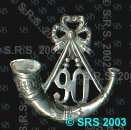
Posts : 10890
Join date : 2009-04-07
Age : 68
Location : Melbourne, Australia
 |  Subject: HMS Arab info Subject: HMS Arab info  Tue Jan 31, 2017 5:43 am Tue Jan 31, 2017 5:43 am | |
| I think some people were trying to find information on HMS Arab ? , I was chatting to Petty Officer Tom about another topic , who mentioned a steamship named the ' Arab ' , so possibly there isn't , or wasn't , a HMS Arab... but possibly a S.S.Arab ! . 90th  |
|   | | rusteze

Posts : 2871
Join date : 2010-06-02
 |  Subject: Re: HMS Arab info Subject: Re: HMS Arab info  Tue Jan 31, 2017 11:04 am Tue Jan 31, 2017 11:04 am | |
| There certainly was an HMS Arab at the time of the AZW (one of a class of composite gunvessels built in 1874). Served in the East Indies and was sold in 1889. There are a number of medals awarded to her crew for the Sudan campaign in 1884. There have been a total of 7 HMS Arabs (the first three captured from the French - sorry Frederic!).
Steve |
|   | | 90th

Posts : 10890
Join date : 2009-04-07
Age : 68
Location : Melbourne, Australia
 |  Subject: HMS Arab info Subject: HMS Arab info  Tue Jan 31, 2017 11:12 am Tue Jan 31, 2017 11:12 am | |
| Interesting , thanks Steve . 90th  |
|   | | xhosa2000
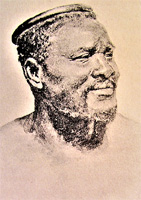
Posts : 1183
Join date : 2015-11-24
 |  Subject: Re: HMS Arab info Subject: Re: HMS Arab info  Tue Jan 31, 2017 1:14 pm Tue Jan 31, 2017 1:14 pm | |
|
Despite the fervent protests of Natal’s legislature, and the grave pronouncements of other officials, Cetshwayo was formally granted permission to visit London in 1882. He arrived on Thursday, 3 August 1882, and was accompanied by a flotilla of British reporters, eager to spread information on the Zulu monarch to a metropolitan readership. Papers dutifully reported that Cetshwayo had travelled with servants, a doctor, and an interpreter, noting that no women accompanied him.[4] The Illustrated London News described the king as “a fine burly man, with a pleasant good-humoured face, though almost black; his manners are frank and jovial, but still dignified, and he wears a European dress” (“Cetewayo in England”). Immediately after disembarking, Cetshwayo was treated to a circle of cheers from admiring visitors, who wished to welcome the potentate to the metropole. The newspapers also reported on particular exchanges that Cetshwayo had with his fellow travelers upon leaving:
A clergyman, holding out his hand, said very heartily, ‘Goodbye, King.’
‘Goodbye,’ responded Cetywayo, in excellent English; then turning to one of his companions, he said, in his own language, ‘He is going home now he has come to his own people and is going to leave us.’ (“The Arrival of Cetywayo”)
Despite the mild condescension in praising his use of the word “good-bye” as an excellent command of the English language, the press coverage of Cetshwayo’s landing is significant in that it portrays the king as both an arriving dignitary and a celebrity that fascinated the metropole.
The initial news coverage of Cetshwayo’s visit specifically worked to play up the monarch’s ‘civilized’ and fitting royal behavior, directly refuting the press depictions of the previous years, which emphasized his barbarism:
In his demeanour Cetywayo is most gentle, utterly belying the popular conception which pictures him as a rude and turbulent savage. His intelligence is shown by the questions which he addresses to his interpreters, and his capacity to win men’s friendship by the extraordinary sympathy felt with him by the passengers of the Arab. He has been, in fact, everyone’s friend, and the passengers who left the ship at Plymouth bade him a hearty farewell. (“The Arrival of Cetywayo”)
|
|   | | Taff price
Posts : 37
Join date : 2015-02-14
Age : 50
Location : cardiff
 |  Subject: Re: HMS Arab info Subject: Re: HMS Arab info  Tue Jan 31, 2017 9:10 pm Tue Jan 31, 2017 9:10 pm | |
| Hi 90th I was trying to find out some information about a medal awarded to 2CPO F DAWE. The medal was for the Third Berma War and has HMS Arab written around the side. [You must be registered and logged in to see this image.]Cheers Geraint |
|   | | Taff price
Posts : 37
Join date : 2015-02-14
Age : 50
Location : cardiff
 |  Subject: Re: HMS Arab info Subject: Re: HMS Arab info  Tue Jan 31, 2017 9:12 pm Tue Jan 31, 2017 9:12 pm | |
| The tenth HMS Arab was a 4-gun screw gunboat, launched at Glasgow in 1874. She was of 720 tons, 660 horsepower, and 10.4 knots speed. Her length, beam, and draught were 150ft, 28ft, and 14ft. In 1884 the ?Arab? commanded by commander R. W. Stopford, was engaged in the operations in the Eastern Soudan, and assisted in the defence of Suakin. In 1889 the HMS Arab was sold for breaking.
Geraint |
|   | | 90th

Posts : 10890
Join date : 2009-04-07
Age : 68
Location : Melbourne, Australia
 |  Subject: HMS Arab info Subject: HMS Arab info  Wed Feb 01, 2017 5:48 am Wed Feb 01, 2017 5:48 am | |
| Thanks Taff Price now I remember . Cheers 90th  |
|   | | 90th

Posts : 10890
Join date : 2009-04-07
Age : 68
Location : Melbourne, Australia
 |  Subject: HMS Arab info Subject: HMS Arab info  Wed Feb 01, 2017 6:03 am Wed Feb 01, 2017 6:03 am | |
| Petty Officer Tom informs me that there was a HMS Arab and also a S.S.Arab ( Steamship ) . 90th  |
|   | | barry
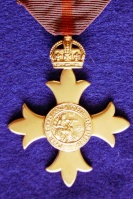
Posts : 947
Join date : 2011-10-21
Location : Algoa Bay
 |  Subject: HMS Arab Subject: HMS Arab  Thu Feb 09, 2017 3:46 pm Thu Feb 09, 2017 3:46 pm | |
| Hi POT,
Good to see you back, We missed your inputs.
Was this HMS Arab commanded by Stopford an iron hulled vessel, and, what were the details of the 4 guns fitted, ie cal and smooth bore or rifled ?
regards
barry |
|   | | Petty Officer Tom

Posts : 360
Join date : 2017-02-05
Location : Texas, U.S.A.
 |  Subject: Re: HMS Arab info Subject: Re: HMS Arab info  Thu Feb 09, 2017 6:12 pm Thu Feb 09, 2017 6:12 pm | |
| Thank you barry, I am happy to be back. I will try to answer your question about HMS Arab, but let me first state that this ship did not serve in the Zulu War. The Union Steam Ship Company’s “Arab” was a 3,170 ton merchant ship that ran a regular mail and passenger service between England and the Cape of Good Hope. During the Zulu War she delivered hospital and food supplies for the military to Natal. In 1882 this ship took Cetewayo from Cape Town to England.
HMS Arab was a 720 ton composite gun-vessel (iron frame and ribs covered with wood planking.) Her main armament was one 7 inch rifled muzzle-loading gun and two 6.3 inch 64 pounder rifled muzzle-loading guns. Commissioned at Devonport in 1875, she was sent to the East Indies. In 1879 she was called back to England where the aft 64 pounder muzzle-loading gun was replaced by three 20 breech-loading guns. In 1881 Commander R.W. Stopford took HMS Arab back to the East Indies Station. The ship’s doctor, Staff Surgeon William P.M. Boyle, had served on HMS Forester during the Zulu War.
Petty Officer Tom |
|   | | barry

Posts : 947
Join date : 2011-10-21
Location : Algoa Bay
 |  Subject: HMS Arab Subject: HMS Arab  Thu Feb 09, 2017 6:27 pm Thu Feb 09, 2017 6:27 pm | |
| Hi POT,
Thanks for the details. I suspected she might have had a wooden hull as she was built at about time hull technology and building methods were changing.
Now, to my knowledge Cetewayo was embarked for his trip into incarceration via the beach at Port Durnford, and as we know there was no port there. Thus it would not have been possible, given the nature of the turbulent littoral conditions at that place to stand the vessel transporting him to the Cape too close to shore. So, do you know what method was used to ferry Cetewayo out to the vessel?
regards
barry |
|   | | Petty Officer Tom

Posts : 360
Join date : 2017-02-05
Location : Texas, U.S.A.
 |  Subject: Re: HMS Arab info Subject: Re: HMS Arab info  Thu Feb 09, 2017 6:43 pm Thu Feb 09, 2017 6:43 pm | |
| barry,
After his capture Cetewayo was brought to Port Durnford where he was taken on board a surf boat, accompanied by Captain R. Poole, R.A., his military escort, and Commander Crawford Caffin, R.N. The surf boat took them out past the breakers to the hired transport “Natal.” The embarkation was supervised by Commander Caffin. There was an illustration of the embarkation in The Graphic, October 18, 1879 that was based on a sketch by Commander Edward H. M. Davis, R.N. transport officer at Port Durnford.
Petty Officer Tom |
|   | | Taff price
Posts : 37
Join date : 2015-02-14
Age : 50
Location : cardiff
 |  Subject: Re: HMS Arab info Subject: Re: HMS Arab info  Thu Feb 09, 2017 7:16 pm Thu Feb 09, 2017 7:16 pm | |
| Hi POT
A friend of mine has a Burma medal 1885-7 with the inscription "F DAWE 2CPO HMS ARAB" around the side. It's quite faded so the F could possibly be an E.
Would you by any chance know anything about "DAWE"?
Any Info would be appreciated.
Thanks
Geraint
|
|   | | Petty Officer Tom

Posts : 360
Join date : 2017-02-05
Location : Texas, U.S.A.
 |  Subject: Re: HMS Arab info Subject: Re: HMS Arab info  Thu Feb 09, 2017 9:35 pm Thu Feb 09, 2017 9:35 pm | |
| Geraint,
Your inquiry is outside of my area of study, which is the Royal Navy’s involvement in the Zulu War. However, I did a little checking and I can tell you that your friend’s medal is the India General Service Medal (1854) with clasp “Burma 1885-7”
I looked at “War Medals and Their History” by William Augustus Steward, and found the following ships entitled to that particular medal and clasp. “Burma, 1885-7. To the crews of H.M.S. "Bacchante," "Woodlark," "Osprey," "Ranger," ''Mariner," "Turquoise," and "Sphinx," which took part in the third Burma War, that resulted in the disposition of Theebaw and the annexation of Burma, the medal with the bar for BURMA 1885-7, as described on page 138, was granted. Those awarded to the navy were generally impressed in tall upright Roman capitals.”
The naming around the edge of your friend’s medal, that you gave, is consistent with the style given above. Do you have a photograph of the naming on the medal?
I have looked through the Medal Roll for the “Naval Brigade engaged in operations in Burmah 1885-7” (ADM171/44). There is no one named Dawe listed; nor is there anyone from HMS Arab on the medal roll.
So now we have a mystery.
Petty Officer Tom |
|   | | Chelmsfordthescapegoat

Posts : 2593
Join date : 2009-04-24
 |  Subject: Re: HMS Arab info Subject: Re: HMS Arab info  Thu Feb 09, 2017 9:57 pm Thu Feb 09, 2017 9:57 pm | |
| P.O.T Good to see you back!!!!!!!!  |
|   | | Petty Officer Tom

Posts : 360
Join date : 2017-02-05
Location : Texas, U.S.A.
 |  Subject: Re: HMS Arab info Subject: Re: HMS Arab info  Thu Feb 09, 2017 11:21 pm Thu Feb 09, 2017 11:21 pm | |
| C.T.S.G.
Thanks! Looking forward to answering peoples' naval questions about the Zulu War.
Petty Officer Tom |
|   | | Frank Allewell

Posts : 8572
Join date : 2009-09-21
Age : 77
Location : Cape Town South Africa
 |  Subject: Re: HMS Arab info Subject: Re: HMS Arab info  Fri Feb 10, 2017 5:21 am Fri Feb 10, 2017 5:21 am | |
| Hitting the ground running Tom, good to see you back mate. |
|   | | Mr M. Cooper
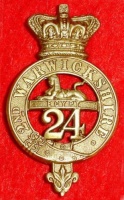
Posts : 2591
Join date : 2011-09-29
Location : Lancashire, England.
 |  Subject: Re: HMS Arab info Subject: Re: HMS Arab info  Fri Feb 10, 2017 5:03 pm Fri Feb 10, 2017 5:03 pm | |
| Many Happy Returns Tom, great to see you back.  Your Naval knowledge has been missed on here mate.  |
|   | | Taff price
Posts : 37
Join date : 2015-02-14
Age : 50
Location : cardiff
 |  Subject: Re: HMS Arab info Subject: Re: HMS Arab info  Tue Feb 14, 2017 1:25 pm Tue Feb 14, 2017 1:25 pm | |
| Tom
Thanks for your help.
As soon as I buy a decent camera I'll get a photo of the name around the medal and post it on here.
Cheers
Geraint |
|   | | barry

Posts : 947
Join date : 2011-10-21
Location : Algoa Bay
 |  Subject: Cetewayo's embarkation at Port Durnford Subject: Cetewayo's embarkation at Port Durnford  Wed Feb 15, 2017 3:03 pm Wed Feb 15, 2017 3:03 pm | |
| Hi POT,
Another question on Port Durnford.
I seem to remember that the warping method was used to move Cetewayo's longboat out through the breakers and to his waiting transport offshore. Was this so?.
Would you happen to have the details of the tech specs in a long boat , versus a surf boat?
regards
barry |
|   | | Petty Officer Tom

Posts : 360
Join date : 2017-02-05
Location : Texas, U.S.A.
 |  Subject: Re: HMS Arab info Subject: Re: HMS Arab info  Wed Feb 15, 2017 5:31 pm Wed Feb 15, 2017 5:31 pm | |
| barry,
Yes, warping was the process for getting Cetewayo from the beach, by surf-boat, out to an awaiting steam tug that would take him to the ship. A longboat was not used.
A description of the surf boat and the warping was given by the Harbor Master at Port Elizabeth. “The method adopted in Algoa Bay for landing cargo on the beach where surf is almost constant, by means of surf boats on warps is very simple. It is found to be safe and effective. Warps are laid down from moorings about 200 fathoms from the beach, and outside the outer break of the sea, in ordinary weather in about 4 fathoms of water. The mooring anchors are rather heavy, for permanent use, and have 30 fathoms of one-inch chain attached to which the warp is shackled. A buoy with a rope sufficient to lift the anchor marks its position, and another buoy rope is attached to the warp about 30 fathoms inshore of its junction with the chain. The warp is hauled taut by a Luff tackle attached to a piece of chain secured round cross planks buried five or six feet in the sand; which holds well and is more readily handled than an anchor. The surf boats are built expressly for the purpose: flat bottomed-of great beam-high at the bow and low at the stern, without keel or stern post except just enough to carry the rudder and the Horns which are very strong and fitted with rollers for the warp to travel over. The rudder is broad and very long and is unshipped before the boat is taken on to the warp. The boats are half decked with a well at both bow and stern in which the crew work the warp and use the stoppers. The bow is fitted with horns and roller the same as the stern. There are no standing shrouds to the mast but two stout runners are fitted on each side, the foremost of which is called a "Dillan tackle," and is used for lifting the warp high enough to enable it to be hauled into the horns of the boat. These runners and tackles serve for rigging when the boat is under sail, and are unhooked when the boat is taken on the warp. When on the warp the boat is hauled in and out, and checked by the stopper holders and crew as found necessary. With ordinary care it is surprising to see the amount of work performed by these boats through surf without damage to the cargo, and it is almost incredible that they stand up under sail so well as they do and hold so good a wind. Europe rope is found to be best for warps (where wire is not used) as it keeps the boats steady and does not give and stretch like coir.”
As for a description of a longboat, it was a 10, or 12, oared vessel capable of working in rough seas, and could be used in surf.
Petty Officer Tom |
|   | | 24th
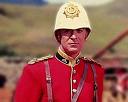
Posts : 1862
Join date : 2009-03-25
 |  Subject: Re: HMS Arab info Subject: Re: HMS Arab info  Wed Feb 15, 2017 7:43 pm Wed Feb 15, 2017 7:43 pm | |
| Gents I have looked can't find nothing. What is the warping method  |
|   | | Petty Officer Tom

Posts : 360
Join date : 2017-02-05
Location : Texas, U.S.A.
 |  Subject: Re: HMS Arab info Subject: Re: HMS Arab info  Wed Feb 15, 2017 8:26 pm Wed Feb 15, 2017 8:26 pm | |
| 24th,
It is basically a pulley system to bring a boat through the surf to shore. It was used along the South Africa coast where landing craft could not safely deliver passengers or cargo ashore under their own power.
Petty Officer Tom |
|   | | | | HMS Arab info |  |
|
Similar topics |  |
|
| | Permissions in this forum: | You cannot reply to topics in this forum
| |
| |
| |
